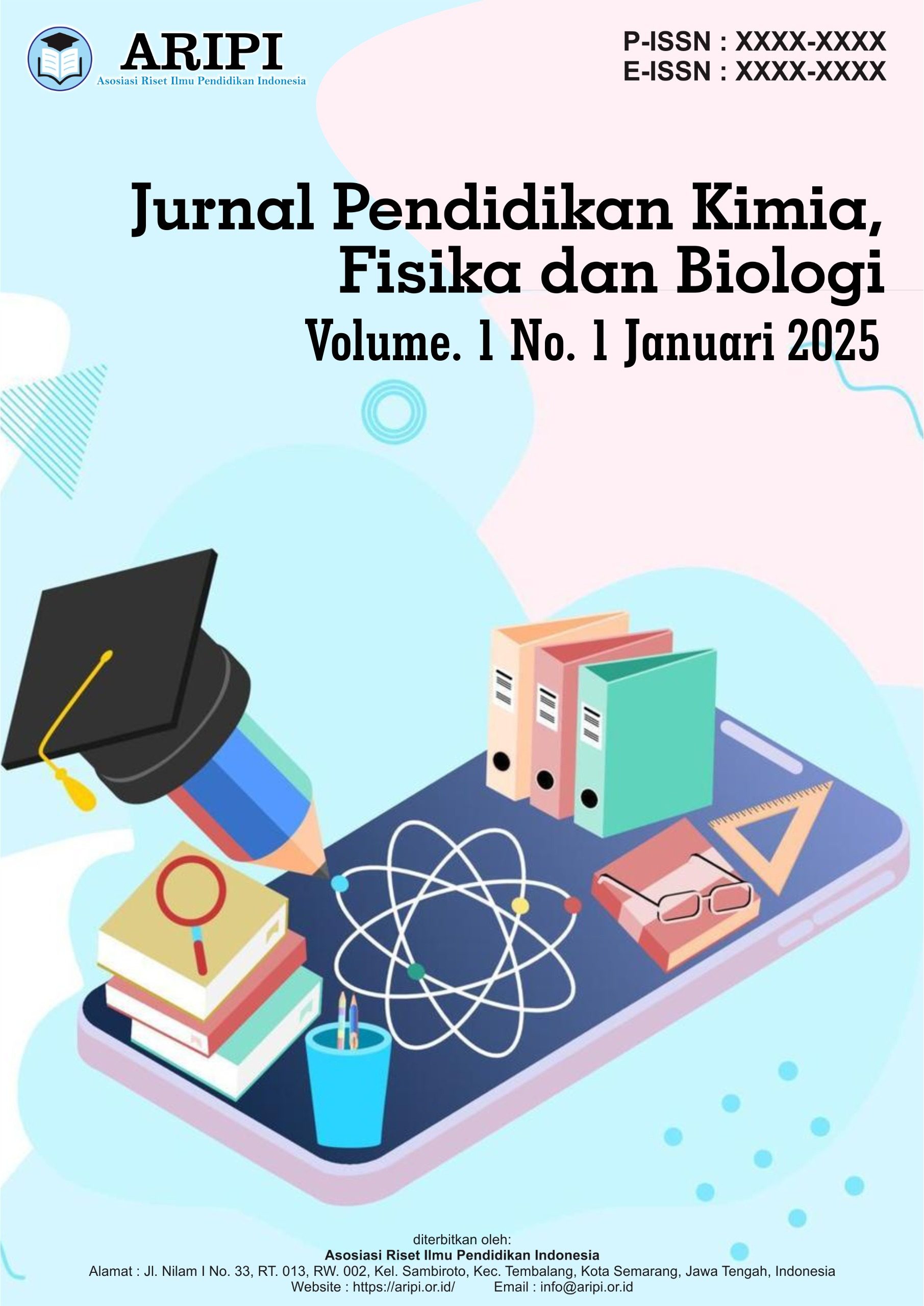Pengaruh Metode Inkuiri Terbimbing terhadap Pemahaman Konsep Ikatan Kimia Siswa SMA
DOI:
https://doi.org/10.61132/jupenkifb.v1i1.164Keywords:
Guided inquiry, chemical bonds, chemistry education, understanding of concepts, experimentsAbstract
Understanding the concept of chemical bonds is a fundamental aspect in chemistry learning at the high school level. However, many students have difficulty in understanding this concept in depth. This study aims to examine the effectiveness of the guided inquiry method in improving the understanding of the concept of chemical bonds. The method used was an experiment with a control group design, where one group was taught with the guided inquiry method, while the other group used the conventional method. The results showed that students who learned with the guided inquiry method had a better understanding of the concept compared to the control group. This finding indicates that the application of the guided inquiry method can be an effective strategy in improving the quality of chemistry learning in schools.
References
Arends, R. I. (2012). Learning to teach. McGraw-Hill.
Bell, R. L., Smetana, L., & Binns, I. (2005). Simplifying inquiry instruction. The Science Teacher, 72(7), 30–33.
Braun, V., & Clarke, V. (2006). Using thematic analysis in psychology. Qualitative Research in Psychology, 3(2), 77–101. https://doi.org/10.1191/1478088706qp063oa
Brown, T. L., LeMay, H. E., Bursten, B. E., Murphy, C., Woodward, P., & Stoltzfus, M. E. (2018). Chemistry: The central science (14th ed.). Pearson.
Bybee, R. W. (2014). The BSCS 5E instructional model: Creating teachable moments. NSTA Press.
Chiappetta, E. L., & Koballa, T. R. (2015). Science instruction in the middle and secondary schools. Pearson Education.
Creswell, J. W. (2014). Research design: Qualitative, quantitative, and mixed methods approaches (4th ed.). SAGE Publications.
Field, A. (2018). Discovering statistics using IBM SPSS statistics (5th ed.). SAGE Publications.
Fraenkel, J. R., Wallen, N. E., & Hyun, H. H. (2012). How to design and evaluate research in education (8th ed.). McGraw-Hill.
Gagne, R. M. (1985). The conditions of learning and theory of instruction. Holt, Rinehart and Winston.
Hake, R. R. (1999). Analyzing change/gain scores. American Educational Research Association.
Hmelo-Silver, C. E., Duncan, R. G., & Chinn, C. A. (2007). Scaffolding and achievement in problem-based and inquiry learning. Educational Psychologist, 42(2), 99–107. https://doi.org/10.1080/00461520701263368
Joyce, B., Weil, M., & Calhoun, E. (2015). Models of teaching. Pearson Education.
Kirschner, P. A., Sweller, J., & Clark, R. E. (2006). Why minimal guidance during instruction does not work: An analysis of the failure of constructivist, discovery, problem-based, experiential, and inquiry-based teaching. Educational Psychologist, 41(2), 75–86. https://doi.org/10.1207/s15326985ep4102_1
Llewellyn, D. (2013). Inquire within: Implementing inquiry-based science standards in grades 3-8. Corwin Press.
National Research Council. (2000). Inquiry and the national science education standards. National Academies Press.
OECD. (2019). PISA 2018 results (Volume I): What students know and can do. OECD Publishing. https://doi.org/10.1787/5f07c754-en
Osborne, J., Simon, S., & Collins, S. (2003). Attitudes towards science: A review of the literature and its implications. International Journal of Science Education, 25(9), 1049–1079. https://doi.org/10.1080/0950069032000032199
Pedaste, M., Mäeots, M., Siiman, L. A., de Jong, T., van Riesen, S. A., Kamp, E. T., & Tsourlidaki, E. (2015). Phases of inquiry-based learning: Definitions and the inquiry cycle. Educational Research Review, 14, 47–61. https://doi.org/10.1016/j.edurev.2015.02.003
Prince, M., & Felder, R. (2006). Inductive teaching and learning methods: Definitions, comparisons, and research bases. Journal of Engineering Education, 95(2), 123–138. https://doi.org/10.1002/j.2168-9830.2006.tb00884.x
Sadler, T. D. (2009). Situated learning in science education: Socio-scientific issues as contexts for inquiry-based learning. Studies in Science Education, 45(1), 1–42. https://doi.org/10.1080/03057260802681839
Schwab, J. J. (1962). The teaching of science as inquiry. Harvard University Press.
Shunk, D. H. (2012). Learning theories: An educational perspective. Pearson.
Taber, K. S. (2002). Chemical misconceptions – Prevention, diagnosis and cure: Theoretical background (Vol. 1). Royal Society of Chemistry.
Vygotsky, L. S. (1978). Mind in society: The development of higher psychological processes. Harvard University Press.
Zohar, A., & Dori, Y. J. (2003). Higher-order thinking skills and low-achieving students: Are they mutually exclusive? The Journal of the Learning Sciences, 12(2), 145–181. https://doi.org/10.1207/S15327809JLS1202_1





